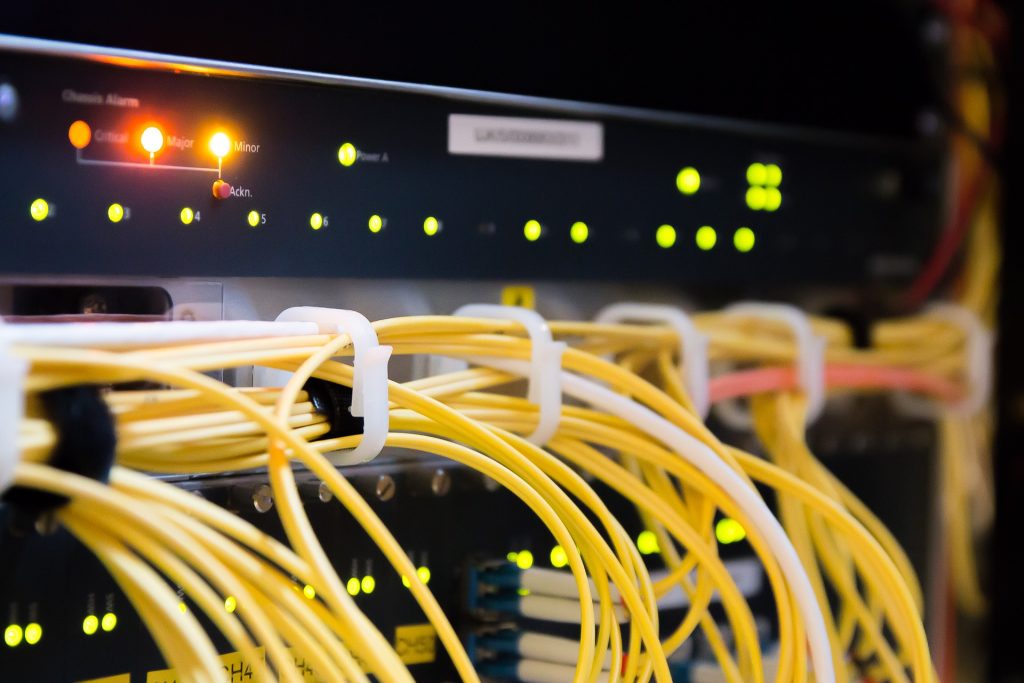The reasons that made me want to know more about the topic of digital pollution are:
the simplicity of managing daily online activities,
the knowledge of how sites and platforms work (servers, energy demand, need for raw materials),
the increased digitisation that has taken place in the last two years,
The desire to stop cutting trees for paper and the reality we are (everyone on the phone, sending photos, voice messages and more via the phone) and what we have been exploiting for years now.
It is too good to be only positive and helpful. Where are the criticalities?
Why does nobody ever talk about it?
I will give it a try after I have informed myself and looked into the subject.

What is digital pollution?
Digital pollution is the phenomenon caused by CO2 emissions from the production, disposal and use of Information and communication technologies (ICT) resources.
Digital pollution covers everything we do with the net. We are not only talking about the production and disposal of technological devices but also and utilisation, i.e. everything to do with data: storage, moving, more or less efficient construction and development of websites, heavy images, videos, streaming, etc.
Data (audio files, videos, images, website pages) occupy a virtual space (the server) and are transferred to a user’s IP whenever requested. All this implies an energy cost.
As far as sites are concerned, consumption depends on how many times a given page is requested and how efficiently this page responds to the call.
If we consider that Google’s servers alone contain 70 trillion pages, we begin to understand the order of magnitude of the amount of data that travels daily on the web.
The bulk of digital pollution comes from the data centres where the big tech companies store data and manage the operational processes that are indispensable to guarantee their services.

What are the causes of digital pollution?
At the root of digital pollution is the carbon dioxide emitted during data exchange or by the electrical systems needed to run the data centres of primary digital services.
Data centres where data is stored and processed consume 10 to 50 times more energy per square metre than a traditional office. According to the International Energy Agency, data centres are responsible for about 1 per cent of the world’s energy demand.
Another important issue concerns the energy required to run cooling systems. For example, the telecommunications company Verizon used machine learning to manage to cool, saving 55 million kilowatt-hours of energy per year across its 24 data centres.
In addition to greenhouse gas emissions, there is the impact of metal mining, refining and disposal (remember that there are 34 billion smartphones, computers, game consoles and televisions on the planet and the number looks set to grow).
In addition to being a finite resource used to produce smartphones, metal mining is linked to the destruction of the environment and the exploitation of children and illegal labour.
There is also an exciting phenomenon pointed out by Françoise Berthoud, a French researcher at the French National Centre for Scientific Research (CNRS), according to which the increase in efficiency in a given technology (in terms of time required, energy used, physical space or memory occupied) generates a new incremental need. In other words, efficiency savings will always be fully or partially offset. This phenomenon is called the rebound effect, and its impact on the environment is indirect and more difficult to measure but inherent in our economic growth model.

Some examples
By owning a phone, 1015 kilograms of CO2 are emitted, equivalent to two cars travelling 3,200 kilometres. And that is to produce it. So, of course, then those who own a phone use it.
So here we can add to the calculation of the emitted anhydride:
19 grams of CO2 per e-mail sent;
16 grams for every message (Whatsapp, Fb, Ig, etc.) sent;
Eight grams of CO2 are emitted on average for Google searches.
We have to add streaming, e-commerce, cloud, photo, and all the other actions we perform daily with smartphones, tablets, and PCs.
Netflix -and its consumption of 450,000-megawatt-hours and Amazon Video contribute one-third of the emissions produced by online streaming. Another large slice goes to YouTube. Think of a popular hit to get a better idea of the data we are giving. For example, the song ‘Despacito’ video – with its 7 billion views – produced more than 250,000 tonnes of CO2.
All this data is held in so many data centres (Google has 1.1 million scattered worldwide). These not only need a lot of energy to run but require just as much to be cooled. And this is one of the biggest problems.
However, it seems strange not to find the CO2 emitted per phone call mad in these lists. I found this information on the Grazie. It is Grazie Natural’s website, the brand of ecological paper launched in 2011 by the Lucart group. I am happy to mention it because it is the same one I use in my hotel.
A one-minute text message or call has a low environmental impact, as it generates only 0.014 grams of CO2.
The worst websites
Karma Metrix was used by AvantGrade.com as a sort of ‘web CO2 meter’ to estimate how much carbon dioxide some sample websites in different sectors put into the atmosphere.
Ratings are estimated for the site when it has 100,000 monthly visits, meaning that if your site has less than that, the rating needs to be revised.
The Italian Ministry of the environment’s website produces at least 30% more CO2 in a year than the average website’s emissions.
The WWF website would produce over 340% more carbon dioxide than the average, and the percentage drops only slightly, to +228%, for the Fridays For Future web pages.
Measuring the carbon dioxide emissions produced by the websites of significant energy, food, and automotive brands, the figures remain above average on many occasions.
According to the ‘web CO2 measurer’, Enel and Eni Gas e Luce sites would produce 133% and 89% more carbon dioxide emissions than the average; Barilla and Ferrero between 129% 236% more; and of Peugeot 136% more.
Among the sectors most sensitive to reducing the environmental impact of having an image- and media-rich website or from which users can make purchases would appear fashion.
Hugo Boss (-31%), Louis Vitton (-40%), Yves Saint Laurent (-48%), Fendi (-74%). There is certainly no shortage of companies that have invested less in making their websites more energy efficient.
Moncler is responsible for over 950% more carbon dioxide emissions than the average, and the percentages drop but only slightly in the case of Zegna (+842%) and Givenchy (+780).

How to reduce?
The decalogue by Ale Agostini, General Manager of AvantGrade, with simple rules to implement, can be helpful. I like the provocative style of the questions, which is why I have quoted them faithfully.
Fewer photos, less pollution: mobile phones today have backup systems that replicate your pictures in a cloud. So how many images do you care about do you have on your mobile phone? Don’t lie. We all know that of the 1359 photos in your gallery, 817 are double, triple or quadruple, and at least 100 were taken by mistake and maybe in the pocket of your jeans. So rule no.1: delete unused photos once a month.
Choose consciously: now that you know that some sites pollute minor than others, make a conscious choice! Choose the one with the most negligible impact between two portals with the same characteristics! You can give it a try at https://www.avantgrade.com/quanto-inquina-il-tuo-sito-web.
Cloud is better: please don’t do it if you ever think of sending the Bible by e-mail. There are super-efficient cloud systems such as Wetransfer that will send your super mega-heavy files, optimising the energy for data transfer.
Streaming, yes, but only if it turns your day around: how often do you fall asleep watching a TV series on Netflix and wake up after you have already ‘watched’ three seasons? Just think, 30 minutes of streaming produces up to 59 g of CO2!
Mail from 1992? Maybe you can delete it: I’d say this point needs no explanation. You and I know Here, too, as, with photos, little is required. Dedicate one day a month to cleaning your mailbox.
APPs that WEAR: the apps you have on your smartphone consume energy and exchange data even if you haven’t opened them since 1902. Delete the apps you don’t use and download only those you need.
- Digital pollution + freedom: web meetings have been the buzzword during smartworking periods. Open your ears wide here because we give you the truest ‘excuse’. If you’ve woken up 10 minutes before a meeting and you’re still in your pyjamas, suggest not turning on the camera and explain to the other participants that active video consumes much more data than a call without a webcam!
Verba volant scripta manent: this vocal fashion must come to an end. And here, too, we are providing you with excellent assistance. Tell your mum to stop sending you ‘good morning’ voice mails and photos and return to the good old written text message because it consumes much less.
Backup? Yes, but only one: if you have smartphones, PCs, and tablets, you don’t need to duplicate or triple backup on multiple cloud platforms. Not only because it is useless but because it would double the memory space occupied and consequently the energy consumption.
A thousand windows for two eyes: it’s OK to have a few windows open, but if your PC screen is practically an aviary, something is wrong. Even if you love multitasking, do the environment a favour and close a few windows you don’t use to help reduce digital pollution.

Interesting solutions
Fortunately, there is not all bad news today. There are active projects and solutions to improve our digital pollution. Let us look at some of them.
One strategy is to increase the lifespan of devices.
Fairphone, for example, offers phones designed with modular components so they can be easily repaired.
Teracube, on the other hand, with a completely biodegradable casing, offers a four-year warranty.
Australia recovers precious metals. Gold, electrical conductors, rare metals: a hidden treasure in electronic devices that, in most cases, is lost.
This is not the case in Australia, where what founder Veena Sahajwalla calls an ‘urban mine’ has been set up – a laboratory that can disassemble and reuse the valuable parts of smartphones, computers and televisions and recycle the others.
Glass and plastic are melted down and used in the ceramic industry and 3D printing.
Then there are fascinating projects such as ReUseHat aimed at reducing digital pollution. This initiative was financed by European funds and sought to design systems to reuse urban heat waste. But, again, there are already examples of use. One of them is a swimming pool in a Paris neighbourhood that is heated by exploiting the heat of computer servers.

Sources
Inquinamento digitale – Sadesign.it
Anche i social inquinano – Tgcom24
Il digitale inquina più degli aerei – Europa Today
Inquinamento digitale dati – InsideMarketing.it
Cos’è l’inquinamento digitale e cosa fare per ridurlo – www.ptqs.it
Quanto inquina la nostra vita digitale e cosa possiamo fare – ilsole24ore.com
CLickclean, Find out if your favourite apps are powered by renewables or dirty energy! www.clickclean.org
How To Be Both Digital And ‘Green’ At The Same Time – Forbes.com
Sara – tourism sector consultant
